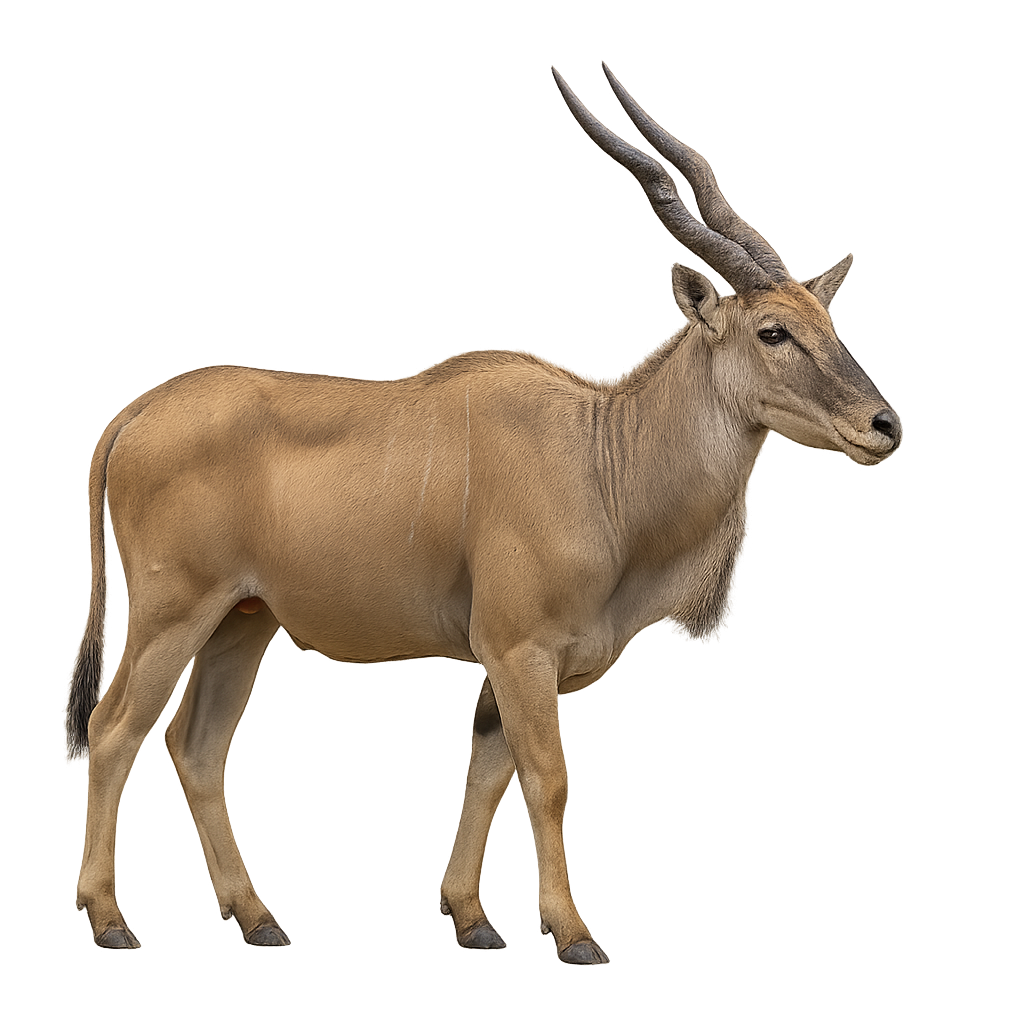Observe and photograph a species in its natural habitat
Learn where and when to observe a species in the wild, how to recognize it in the field, and what habitats it lives in. Get photography tips adapted to its behavior and capture stunning images without disturbing the animal. For full details, open the complete profile in the WildlifePhotographer app.
Common Eland
Scientific name: Tragelaphus oryx

IUCN Status: Least Concern
Family: BOVIDAE
Group: Mammals
Shyness: Suspicious
Safe distance: 50 m
Breeding season / Courtship: 15.03-15.05
Gestation: 210 jours
Births: 15.10-15.12
Habitat:
Savanna and grassy areas
Description:
The Common Eland is a large herbivorous ungulate, belonging to the bovidae family, and one of the largest species of antelope. It can stand up to 1.5 meters tall at the withers and weigh between 400 and 900 kg, with males generally being larger than females. Its coat is usually light brown or gray, with lighter vertical stripes on the flanks. The Common Eland has large, spiral horns that can reach up to 80 cm in males. It primarily inhabits savannas and grasslands in sub-Saharan Africa, where it feeds mainly on grasses, leaves, and bushes. It is a social animal, living in large groups, especially during the breeding season. While the Common Eland is currently listed as of least concern, it faces threats such as habitat loss, hunting, and competition with livestock for food resources.
Recommended lens:
>=300 mm
Photography tips:
Approach slowly and discreetly, using a telephoto lens to capture images from a distance. Although the eland is the largest of the antelopes, it is relatively quiet and may retreat quickly if disturbed.
Photograph early in the morning or late in the afternoon, when the light is soft and the eland is more active, often grazing in savannas, open grasslands, or lightly wooded areas.
Capture moments of natural behavior: elands typically live in small family groups or larger herds, offering great opportunities to photograph social interactions or majestic movements in their natural surroundings.
Be patient and respectful. The eland can be wary and is constantly alert. Stay silent, avoid sudden movements, and wait until it feels at ease to capture authentic images without causing stress.
The eland is classified as Least Concern by the IUCN. However, it is important to respect its natural habitat and avoid disturbing its feeding or social behavior. Follow local conservation rules to help protect this iconic large antelope.
Ready to take action?
Choose your platform and start your free trial today



